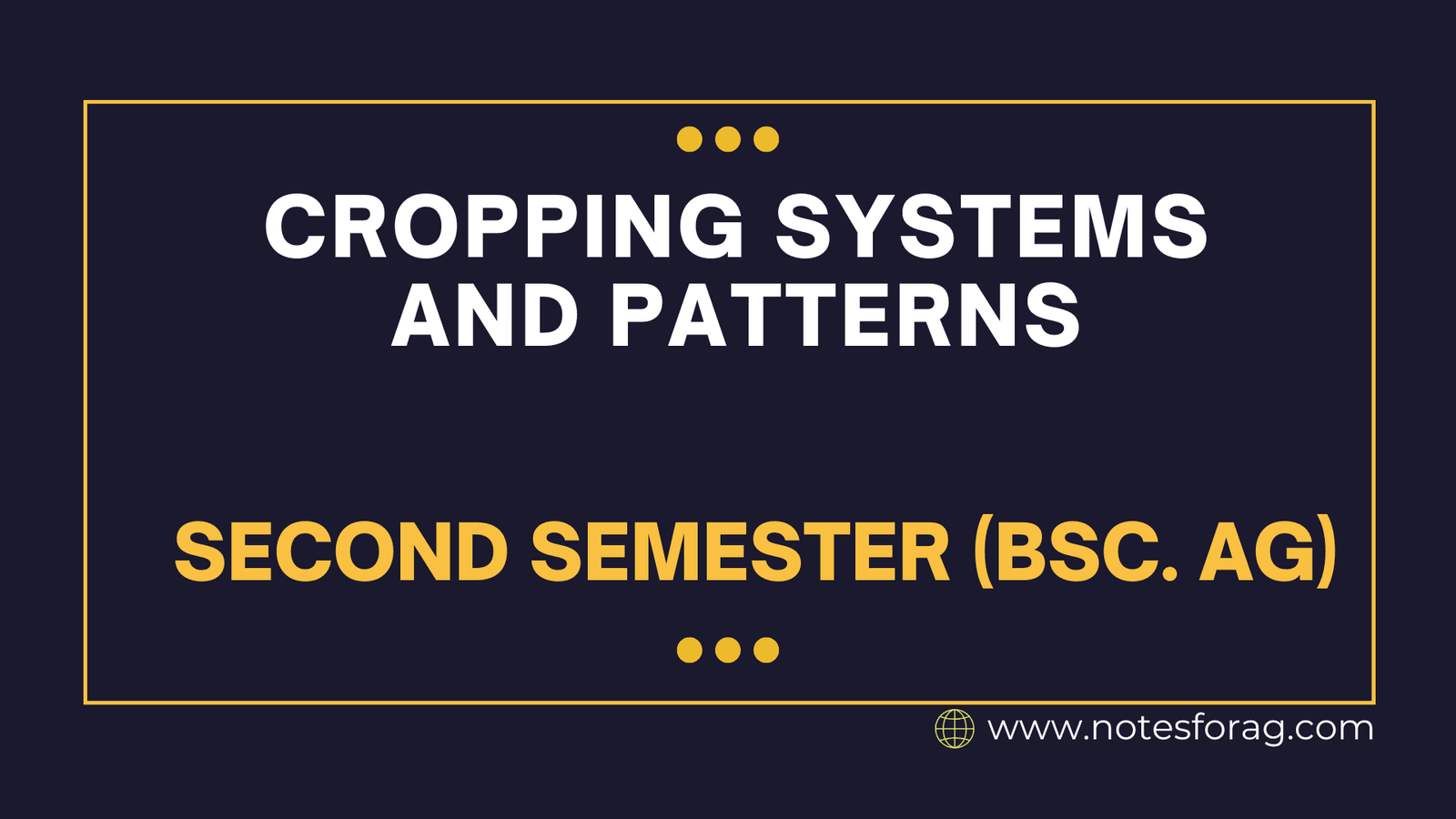
Agriculture is the backbone of many economies, and effective cropping systems play a crucial role in ensuring food security and environmental sustainability. Farmers use various cropping methods to enhance productivity and maintain soil health. Some important cropping systems include multiple cropping, intercropping, crop rotation, integrated crop management (ICM), and sustainable agriculture practices. This article explores these systems and their significance in modern farming.
Table of Contents
1. Multiple Cropping System
Multiple cropping is a practice where two or more crops are grown on the same land within one year. This method helps in maximizing the use of available land and increasing farm productivity. It also ensures better resource utilization and reduces the risk of crop failure.
Types of Multiple Cropping system
Sequential Cropping: In this method, crops are grown one after another on the same land within a year. For example, a farmer may grow wheat in the winter season and maize in the summer.
Relay Cropping: Here, the second crop is planted before the first crop is fully harvested. This helps in better land utilization and reduces the fallow period.
Intercropping: This involves growing two or more crops together in the same field. We will discuss this in detail in the next section.
2. Intercropping

Intercropping is a method where two or more crops are cultivated together on the same piece of land. This practice is beneficial in improving soil fertility, reducing pests, and maximizing yield.
Types of Intercropping
Row Intercropping: Different crops are grown in alternate rows. For example, maize and beans can be planted in alternating rows.
Strip Intercropping: Crops are grown in wider strips to allow better light penetration and easy harvesting.
Mixed Intercropping: Seeds of different crops are mixed and sown randomly in the field.
Relay Intercropping: A new crop is introduced before harvesting the first crop to maximize land use.
Benefits of Intercropping
- Reduces the risk of total crop failure
- Improves soil fertility by nitrogen-fixing crops
- Controls pests and diseases naturally
- Enhances efficient use of nutrients, water, and sunlight
3. Crop Rotation

Crop rotation is the systematic planting of different crops in the same field in a sequential manner over different seasons. This method is beneficial for soil conservation and maintaining soil fertility.
Examples of Crop Rotation
- A common rotation is planting legumes (like peas or beans) after cereals (like wheat or maize). Legumes fix nitrogen in the soil, improving fertility for the next crop.
- Rotating deep-rooted crops (such as cotton) with shallow-rooted crops (such as wheat) helps in better nutrient utilization.
- Alternating pest-resistant crops with susceptible crops helps in breaking the pest cycle.
Advantages of Crop Rotation
- Reduces soil erosion
- Improves soil fertility and structure
- Controls weeds, pests, and diseases
- Enhances water retention in the soil
4. Integrated Crop Management (ICM)
Integrated Crop Management (ICM) is a holistic approach to farming that combines different techniques to achieve high yields while ensuring environmental protection. It involves:
Soil Health Management: Using organic matter, cover crops, and reduced tillage to maintain soil quality.
Water Management: Implementing irrigation techniques like drip irrigation to conserve water.
Pest and Disease Control: Using natural predators, crop rotation, and resistant crop varieties instead of chemical pesticides.
Nutrient Management: Applying fertilizers in a balanced manner based on soil tests.
Benefits of ICM
- Increases productivity while preserving soil and water resources
- Reduces dependency on chemical inputs
- Promotes sustainable farming practices
5. Sustainable Agriculture Practices
Sustainable agriculture focuses on farming in a way that meets current food needs without compromising the ability of future generations to meet their needs. Some key sustainable farming practices include:
Organic Farming
- Uses natural fertilizers like compost and manure instead of synthetic fertilizers.
- Avoids chemical pesticides and herbicides, relying on biological pest control.
- Enhances biodiversity and soil health.
Agroforestry
- Integrates trees and shrubs with crops and livestock farming.
- Helps in soil conservation and provides additional income sources through timber and fruit.
Conservation Tillage
- Reduces soil disturbance by minimizing plowing.
- Helps retain moisture and prevents erosion.
Precision Farming
- Uses modern technologies like drones and GPS to optimize farming practices.
- Ensures efficient use of water, fertilizers, and pesticides.
Cover Cropping
- Planting cover crops like clover and mustard during the off-season to prevent soil erosion and improve soil fertility.
Conclusion
Choosing the right cropping system is essential for maximizing farm productivity while ensuring environmental sustainability. Multiple cropping, intercropping, and crop rotation help in better resource utilization and risk management. Integrated Crop Management (ICM) ensures efficient farming techniques, and sustainable agriculture practices help in maintaining soil health and biodiversity. By adopting these methods, farmers can improve yield, conserve resources, and contribute to a more sustainable agricultural future.
Frequently Asked Questions (FAQs)
1. What is the importance of cropping systems?
Cropping systems help maximize land use, improve soil health, reduce pests, and enhance agricultural productivity while ensuring sustainability.
How does intercropping benefit farmers?
Intercropping reduces the risk of total crop failure, improves soil fertility, controls pests naturally, and maximizes resource use.
3. Why is crop rotation necessary?
Crop rotation prevents soil depletion, controls pests and weeds, improves soil structure, and reduces the need for chemical fertilizers.
Related Articles

